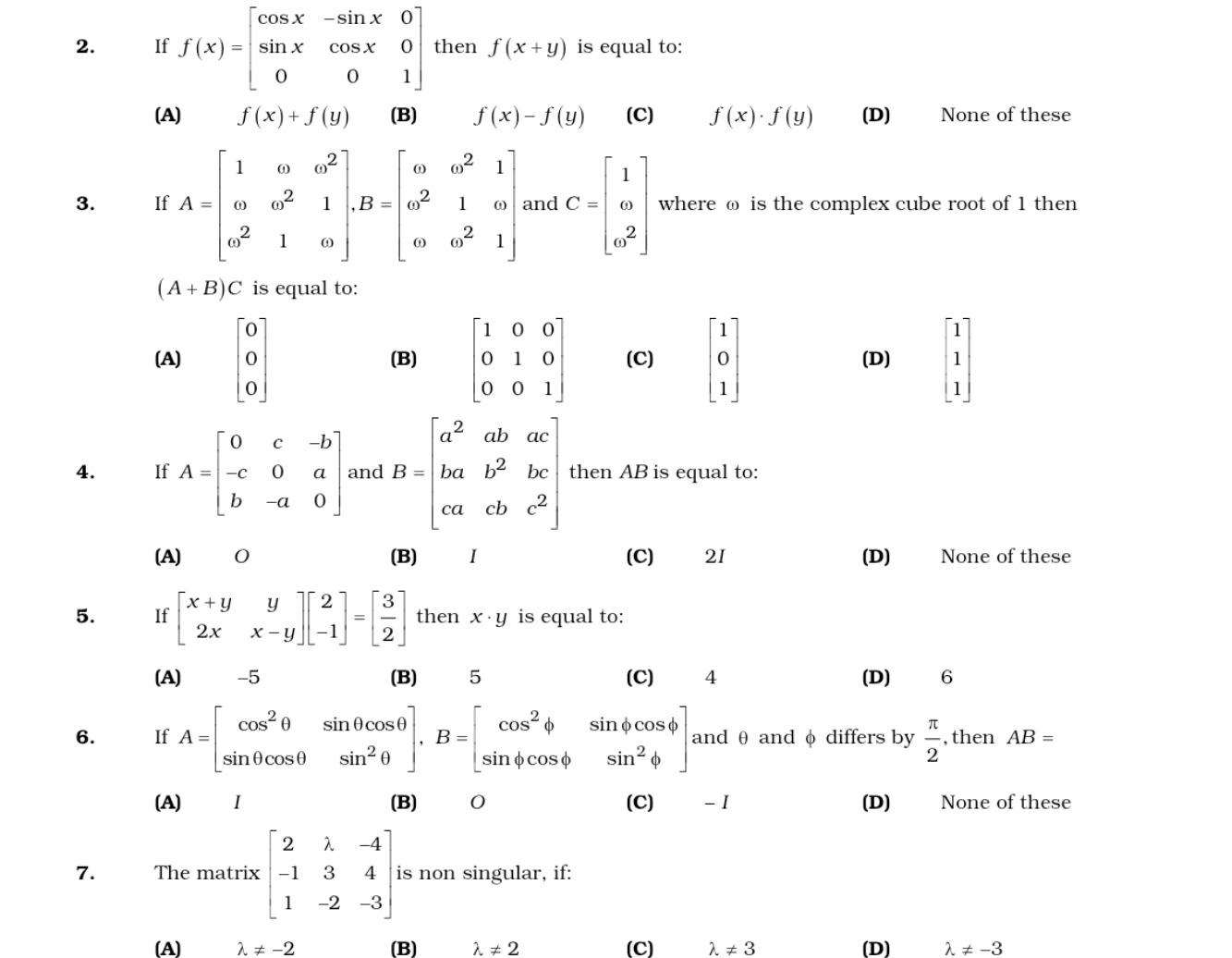Question
Question: If $f(x) = \begin{bmatrix} \cos x & -\sin x & 0 \\ \sin x & \cos x & 0 \\ 0 & 0 & 1 \end{bmatrix}$ t...
If f(x)=cosxsinx0−sinxcosx0001 then f(x+y) is equal to:

f(x)+f(y)
f(x)-f(y)
f(x) \cdot f(y)
None of these
f(x) \cdot f(y)
Solution
To find f(x+y), we replace x with x+y in the definition of f(x): f(x+y)=cos(x+y)sin(x+y)0−sin(x+y)cos(x+y)0001.
Now, let's compute the product f(x)⋅f(y): f(x)⋅f(y)=cosxsinx0−sinxcosx0001cosysiny0−sinycosy0001
Performing matrix multiplication: The element in the first row, first column is (cosx)(cosy)+(−sinx)(siny)+(0)(0)=cosxcosy−sinxsiny=cos(x+y). The element in the first row, second column is (cosx)(−siny)+(−sinx)(cosy)+(0)(0)=−cosxsiny−sinxcosy=−(sinxcosy+cosxsiny)=−sin(x+y). The element in the second row, first column is (sinx)(cosy)+(cosx)(siny)+(0)(0)=sinxcosy+cosxsiny=sin(x+y). The element in the second row, second column is (sinx)(−siny)+(cosx)(cosy)+(0)(0)=−sinxsiny+cosxcosy=cosxcosy−sinxsiny=cos(x+y). The third row and third column elements remain unchanged, resulting in [001].
Thus, f(x)⋅f(y)=cos(x+y)sin(x+y)0−sin(x+y)cos(x+y)0001. This is equal to f(x+y).
